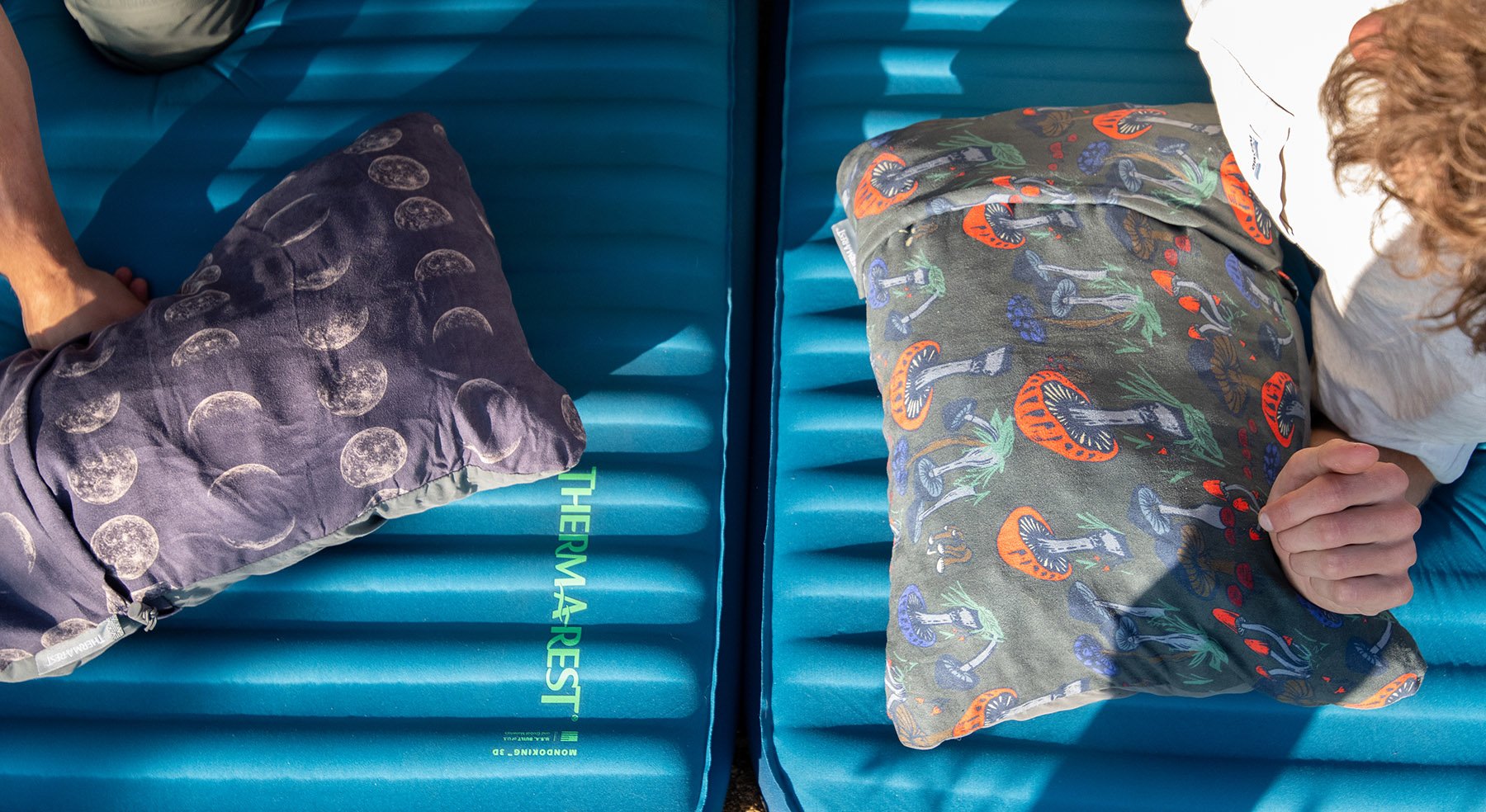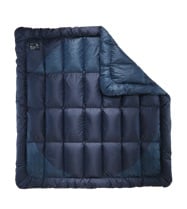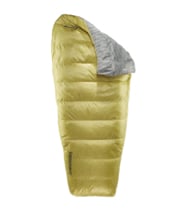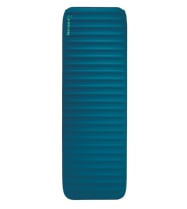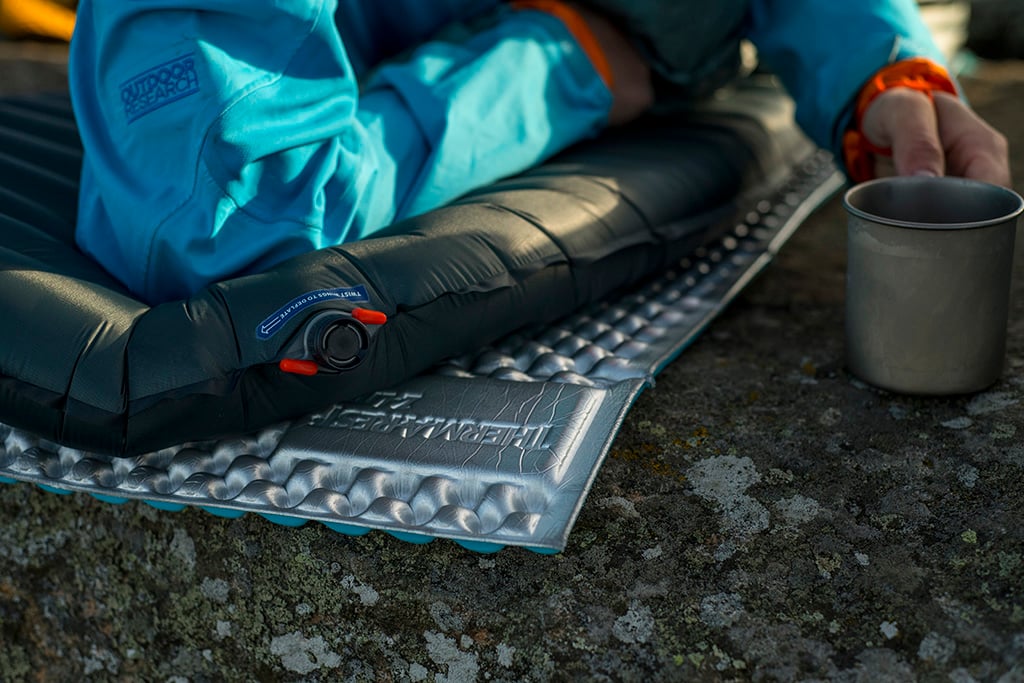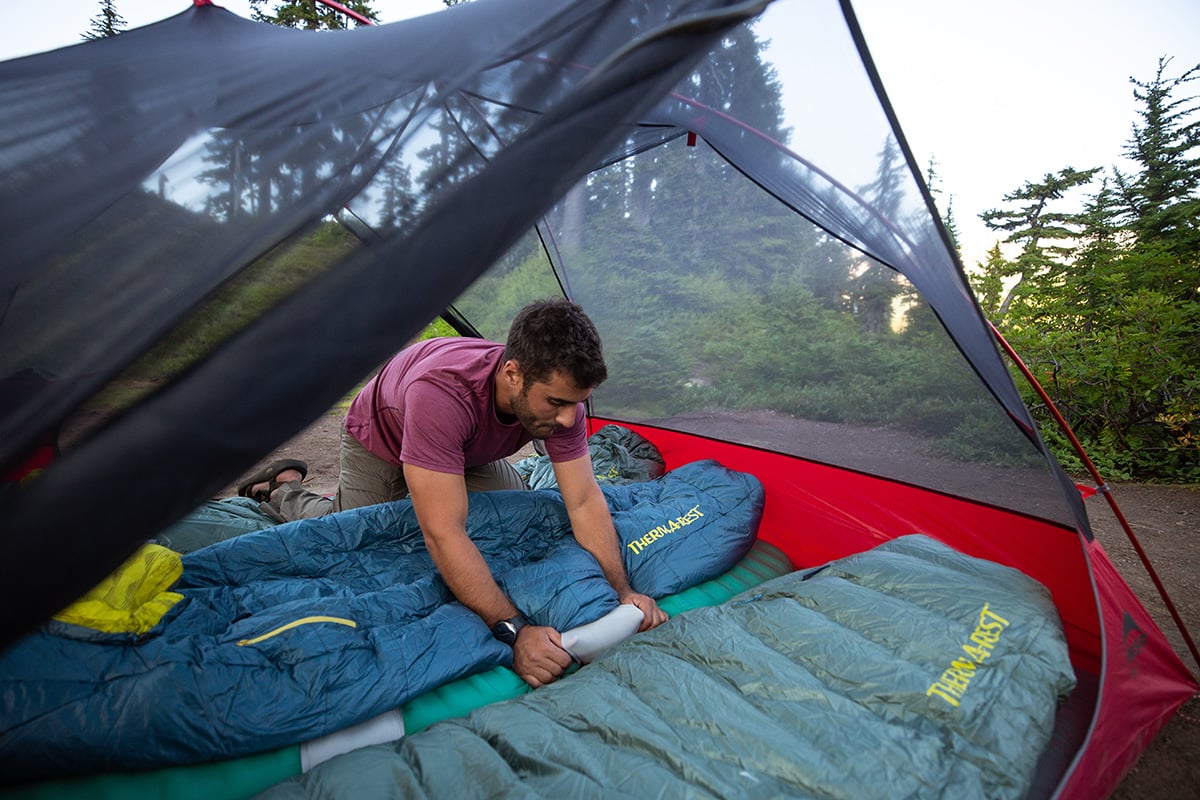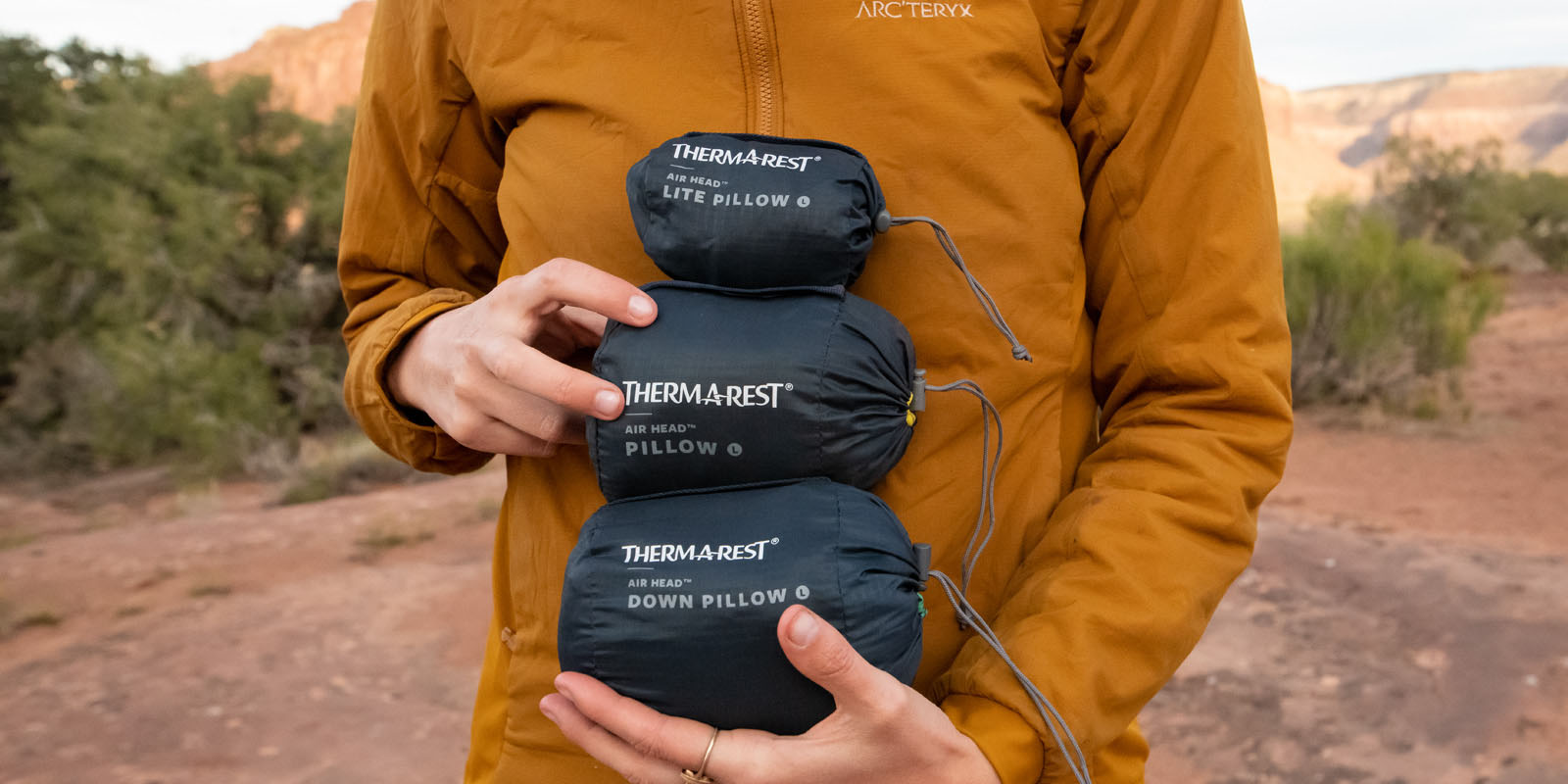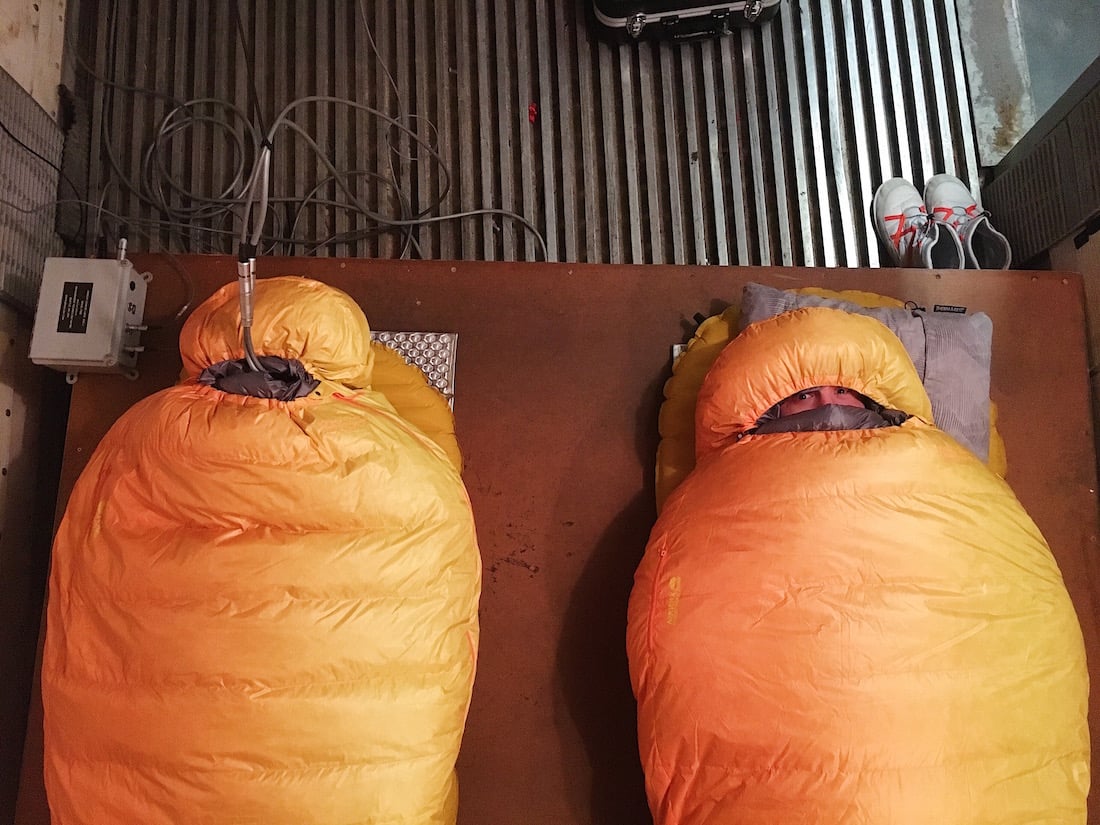Year after year the Compressible Pillow is rated as one of the best camping pillows available. Its simple and portable design consistently delivers at-home comfort to camps near and far. What’s more, it does so while being sustainable.
We’re proud of our commitment to manufacturing premium gear in-market. As such, we’re happy to give you this look behind the scenes and show you how the Compressible Pillow is made.

Making the Compressible Pillow Step 1: Upcycling Foam
Sort of like our company, the Compressible Pillow starts with foam. Foam is the reason the pillow delivers top-notch comfort while remaining light and portable.
A self-inflating pad is one of the best ways you can be comfortable under the stars. Why? The open-cell foam cores that go into this type of pad are warm, supportive, quiet and compact. The very same foam we put into our self-inflating pads is what we put into the Compressible Pillow. Unlike the pads, we don’t cut out specific core shapes for the pillows. Instead, we upcycle the excess foam scraps from pad core production to fill the pillows.
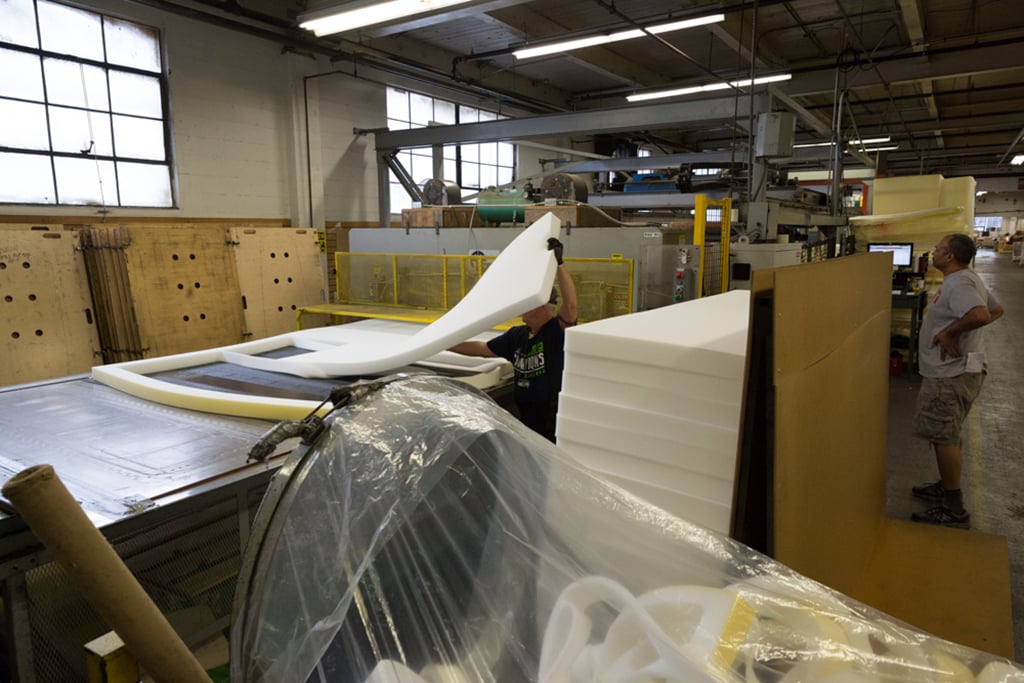
Sleeping Pad Cores to Compressible Pillows
To understand how we get the foam for the Compressible Pillows it’s helpful to understand how we make our sleeping pad cores.
We receive our foam in giant uniform blocks measuring 6.5ft x 9ft x 3.5ft. To cut these massive blocks down into the specific core types (such as StrataCore™) for each one of our pads, we run them through a big, fancy foam cutting machine. It’s called the Bäumer CNC Foam Cutter and it’s one of the only machines in our pad production lines we didn’t design ourselves.
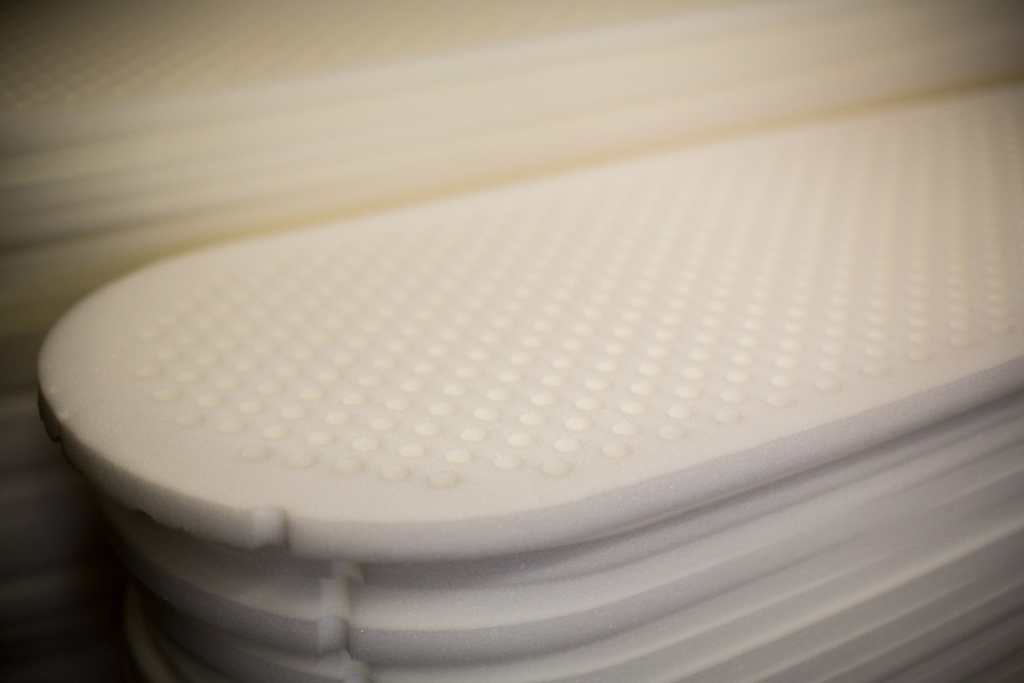
Going from a colossal block of foam down to the specific shapes and designs of each pad core means there will be scraps and unused bits. For example, our classic ProLite™ series feature Die-Cut foam cores. Diagonal channels are cut out of the foam to reduce weight and improve packability while minimizing heat loss. The foam removed to create the channels end up as 1 to 1.5-inch thick “plugs.” These plugs are collected and put into Compressible Pillows.
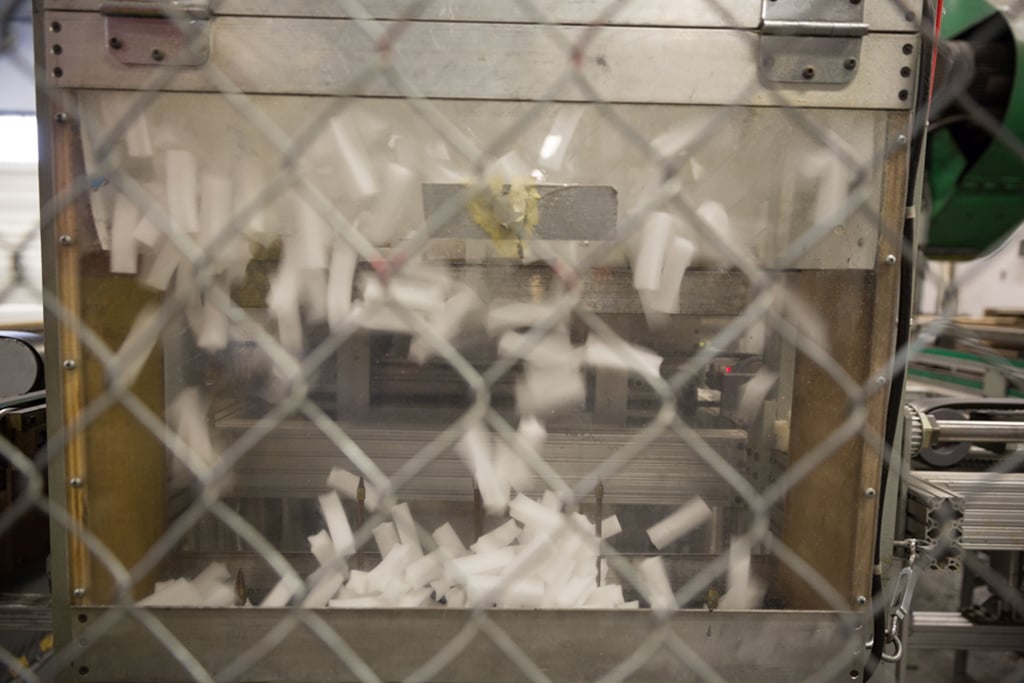
The plugs are uniform in size and shape and can go straight into pillows without further processing. Other scraps such as the edges removed to make tapered—or “mummy”—core shapes are too large and awkwardly shaped to be put straight into the pillows. These foam scraps go through an extra step of processing and are ground down in order to be suitable for use in the Compressible Pillows.
In 2021 we project to need just around 40,000 pounds of foam to meet the demands of Compressible Pillow production. That means nearly all of our foam scraps are upcycled into Compressible Pillows. Foam that is not upcycled is sent to a third-party recycler. They reconstitute it into more giant raw blocks of open-cell foam.
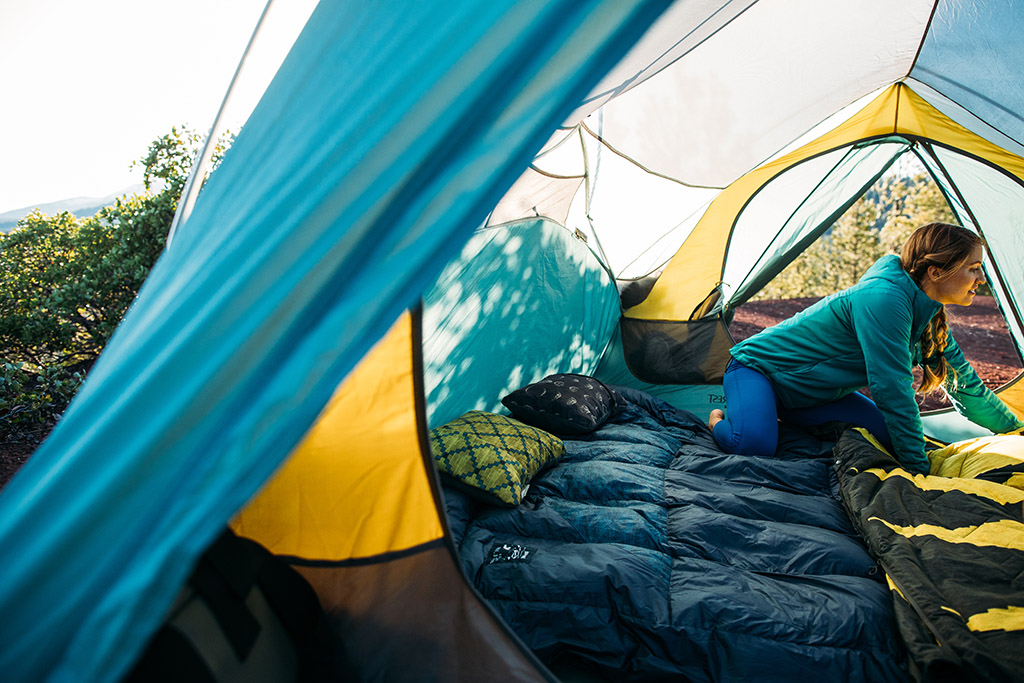
Making the Compressible Pillow Step 2: Recycled Polyester
Once we have the foam ready for the pillows it needs to be sewn up in the covers. Upcycling the foam isn’t the only sustainable aspect of the Compressible Pillow. The polyester pillow covers are 60% recycled.
That 60% is actually an average. The gray fabric on the back of the pillow is 100% recycled, while the printed fabric on the front is 38% recycled. The reason for this has to do with performance characteristics. As of now, recycled fabrics tend to be harder to work with. They are generally weaker and more difficult to make soft and comfy, among other drawbacks.
We receive the fabric in large rolls called “bolts.” The fabric is then cut down to proper pillow cover dimensions for the four sizes of Compressible Pillow we offer: Small, Medium, Large and Extra Large. Once the polyester covers are sized correctly, they are sewn part of the way, stuffed with foam, then sewn shut. The final Compressible Pillow is ready to be packaged and shipped.
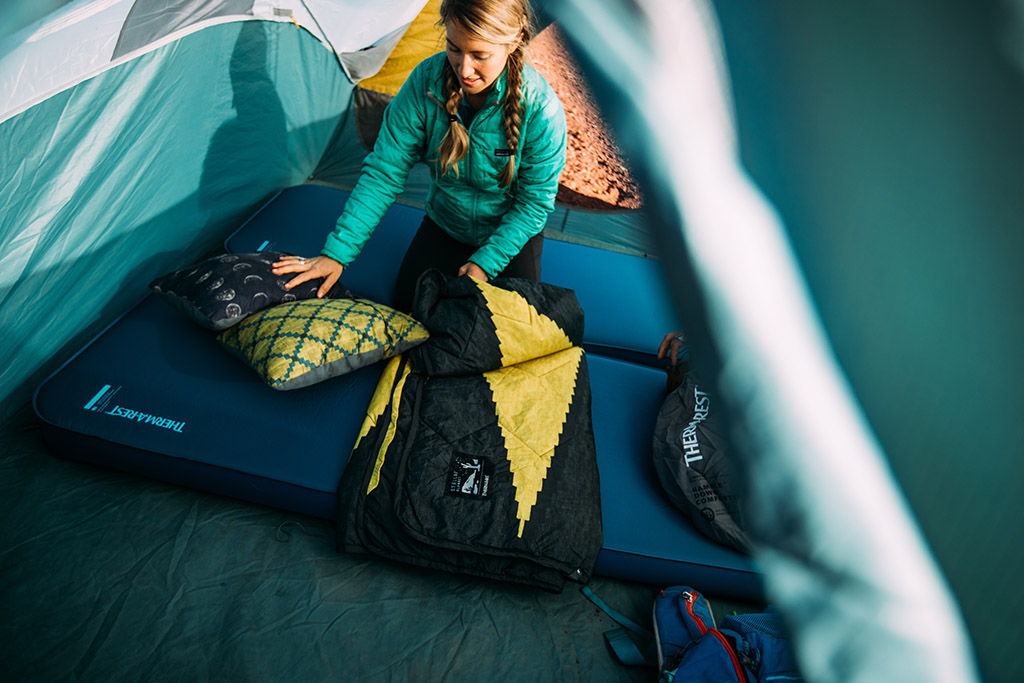
Looking Ahead: Why Recycled Polyester is So Important
At this point the Compressible Pillow is complete. However, a better perspective on the importance of recycled polyester will help you understand why we make it the way we do. If you are unsatisfied with our answer to why our polyester covers are only 60% recycled, you’re not alone. We are unsatisfied as well. The aim is to move that 60% up to 100%, but there are challenges. The global polyester industry is massive and is entrenched in an oil-based status quo.
The fact of the matter is that the polyester we use for Compressible Pillow production is a tiny drop in the ocean of the polyester industry. The textile industry is the fourth largest industry in the world. In 2018 total textile production volume reached 110 million metric tons. About two-thirds of all textile fibers are synthetic, and more than half of those fibers are made from oil-based polyester.
There’s a reason we use so much polyester, particularly in the outdoor industry. It is an incredibly versatile textile that has made possible much of what we expect from our gear. Polyester can be lightweight, weather-resistant, durable, moisture-wicking, easily washed and comfortable. Unfortunately, the whole of the conventional polyester supply chain results in significant waste and a negative impact on the environment.
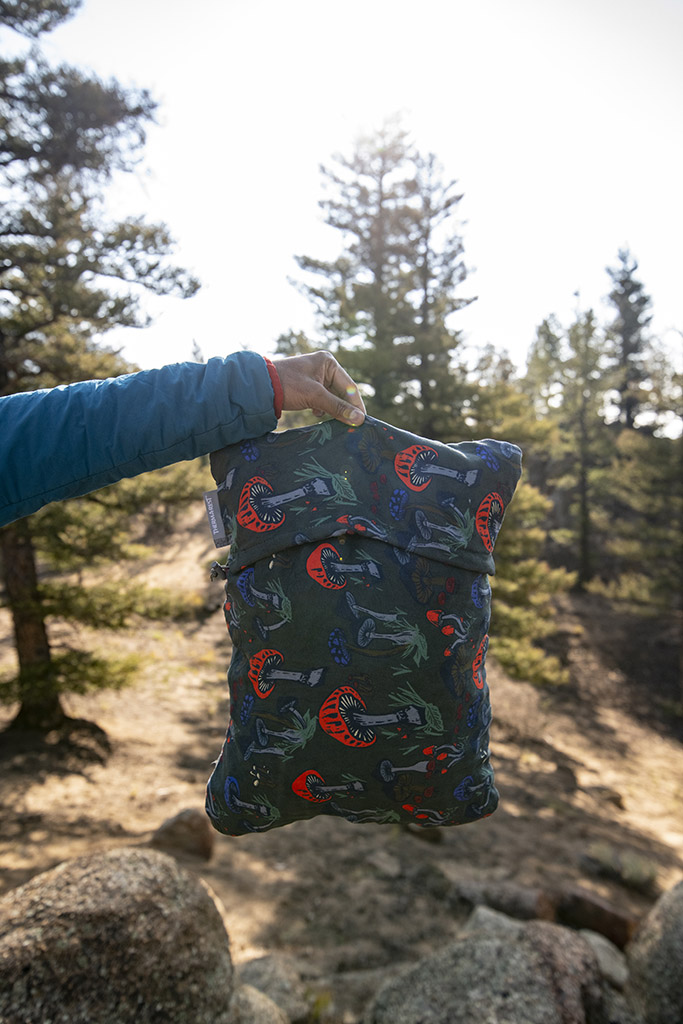
Using recycled polyester is a key step in improving the environmental impact of utilizing this remarkable material. Virgin polyester begins as crude oil, it is then refined into the necessary building blocks of the textile. Recycled polyester, on the other hand, eliminates the need to extract crude oil from the earth and refine it. The full life cycle of 1 kg of conventional polyester fabric has been estimated to release more than 30 kg of CO2 equivalents into the atmosphere. Eliminating the need to drill and refine crude oil meaningfully reduces that number.
Most recycled polyester comes from plastic bottles that are processed to extract the necessary building blocks for new threads. Recycled clothing can also be used, but it is less common. The collection infrastructure and processing technology required to recycle plastic and turn it into polyester is expensive and tiny compared to the oil infrastructure. Recycled polyester simply doesn’t match the demand for virgin polyester. Which makes the whole supply chain slow to embrace it and convert.
We mentioned the drawbacks earlier, and those still persist, yet more investment into recycled threads would likely close that gap for good. The fact is that recycled polyester has been around for a while; Patagonia first made a fleece out of recycled polyester in 1993. In that time, recycled polyester has been able to significantly reducee the performance gap with oil-based virgin polyester, and it’s only getting better.
To make meaningful sustainability progress companies need to manufacture products like the Compressible Pillow. It may be small, but each bit counts. If we, as manufacturers, make recycled polyester goods more available, then consumers can access the features and performance they need while improving sustainability. But it works both ways. If consumers prioritize their money on recycled polyester goods, then companies will invest more in bringing to market what they want.

Proud of our Compressible Pillows
The Compressible Pillow represents much of what Therm-a-Rest prides itself on. It’s a simple and effective solution to being more comfortable while sleeping outdoors. It’s a durable and reliable piece of gear ready to perform on all kinds of trips. It helps preserve the natural world that we love with its sustainable design. We manufacture our gear in-market so we can imbue our products with our values and not just talk about them.
Related Posts:
- Bringing a Camping Pillow: Is it Worth the Weight?
- Camping Pillows: Therm-a-Rest’s Complete Guide
- How To Build A Sleep System
Updated. Originally Published July 13, 2021.
